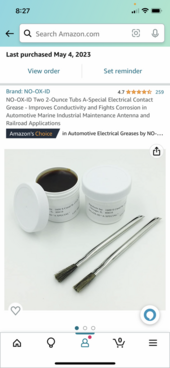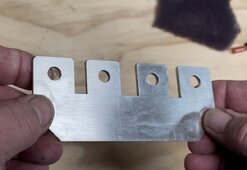Lasertrapper
New Member
- Joined
- Jan 20, 2022
- Messages
- 60
Anybody try Permatex 09128 Copper Anti-Seize Lubricant on LFP terminals to lower & maintain connection resistance?
Your copper spacers should work fine as long as they reasonably flat. Draw polish/lap and it should be fine. I’ve been very dissatisfied with every metal/conductive dielectric grease I’ve tried. Copper, zinc, silver and graphite and I always come back to the original. I do tin my busses that I make, but don’t see any improvements except for cosmetic (low tarnish). If you are concerned about conductivity of a connection, an internal resistance meter definitely shows a problem when checking across a junction or cable. I do it every time before power runs through.Thanks for the replies!
I guess the answer to my question is no. I'm making connections to qty 4 JK BMS that have two common M6 high current connections on each side. Because this will be a very compact, 16 Li cell, 12V system for my van, I need to minimize width footprint of each BMS, hence have made solid 1/2" copper extensions..... see pic.
The BMS high current connection points are not flat because of manufacturing methods, and I don't think efforts to flatten them mechanically (like filing) would be wise, or fruitful.
So, my copper extensions ARE flat and I'm searching for a way to provide a larger conductive patch between the mating surfaces, hence my interest in a conductive, (but not di-elecric) malleable material between the irregular and flat surfaces.
I do know that the copper anti-seize compound is very effective in preventing corrosion for many years in extreme exposure; I have a MN summer lake home that requires a very long dock... qty 12 eight foot sections, and having steel legs and many steel bolts. About half of the bolts are submerged for 5-6 months in summer, then subject to snow, rain, sand while stored on the beach for the winter. The other bolts are additionally subject to wave activity (!). My father & I assembled these dock sections from new in the early 1980's. The bolts are easily loosened to adjust the dock height to this day!
The anti-seize compound may also be quite heat-resistant as it is used for disk brake pivot points etc.
Would resistance measurement of two, bolted metal surfaces before and after applying the paste, then heating in an oven & repeating the resistance measurement be an appropriate test?





